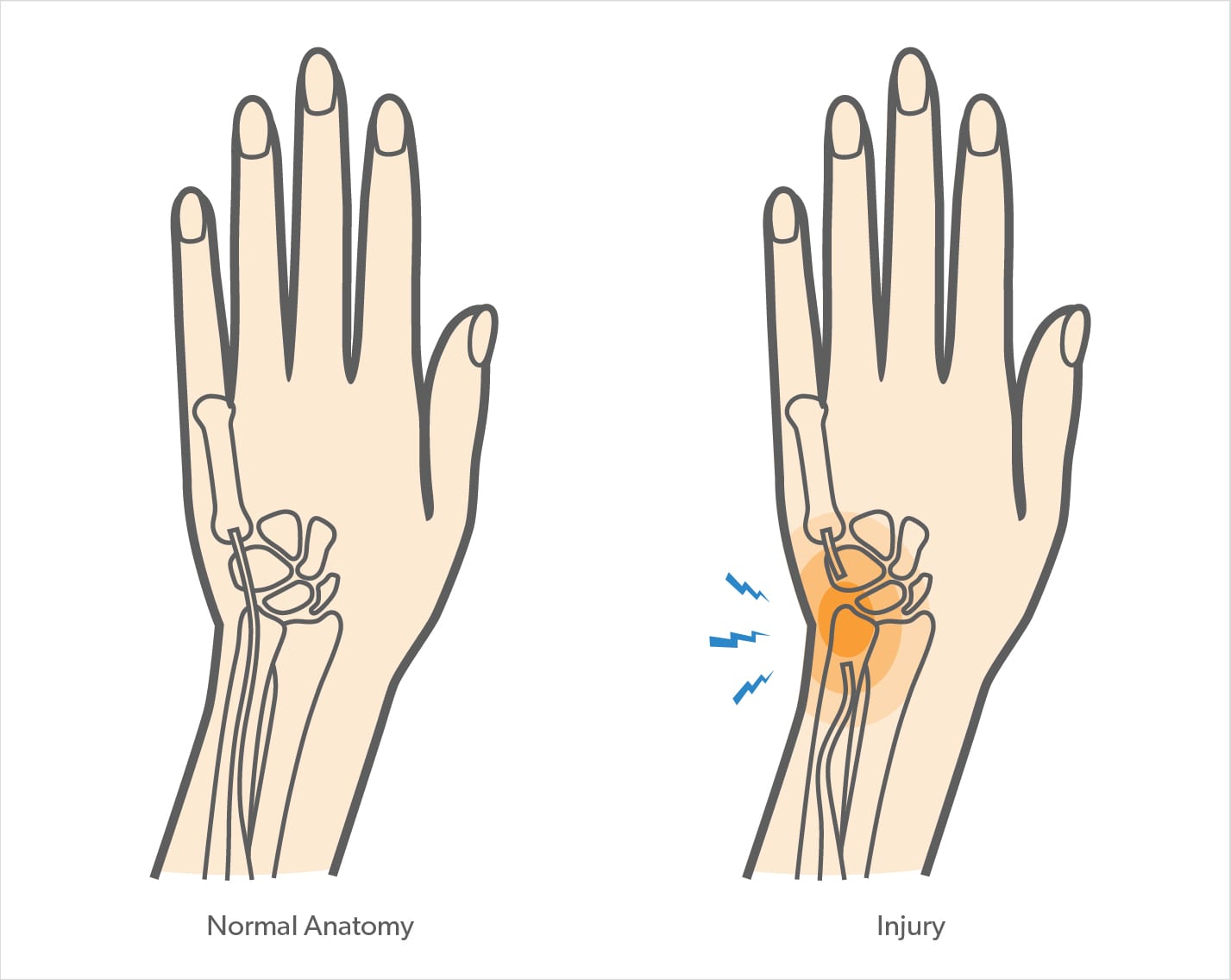Tendons are strong, fibrous tissues that connect muscles to bones. They glide through a tunnel, or sheath, when muscles contract. The extensor carpi ulnaris (ECU) is a major tendon that connects the forearm to the wrist. Located on the ulnar side (small finger side) of the forearm, the ECU tendon runs from the elbow to the top of the ulna bone, where it’s held in place at the base of the small finger by the ECU tendon subsheath.
A sudden twisting of the wrist can cause the subsheath to rupture, allowing the tendon to snap in and out of place. This condition is sometimes referred to as “snapping wrist” because it creates a snapping or popping sensation when the wrist moves. The condition is painful and can damage the tendon over time.


